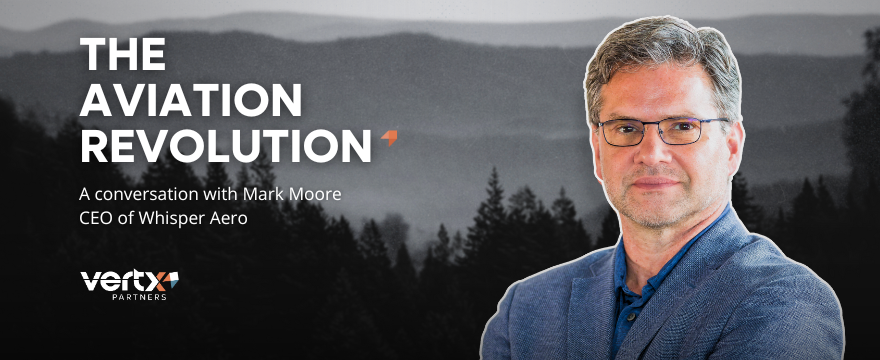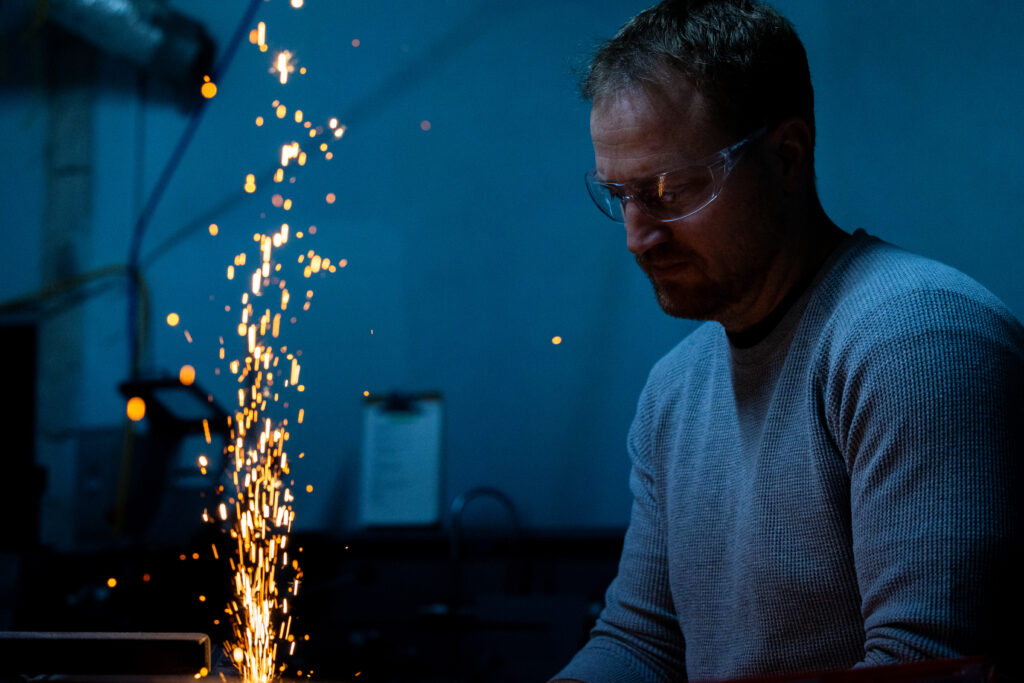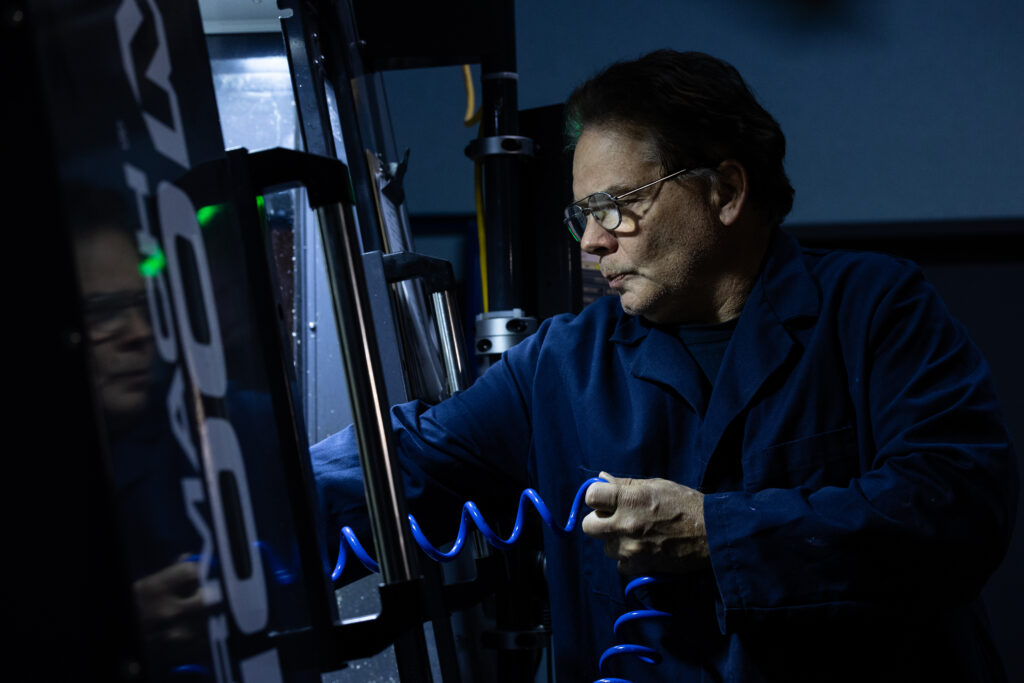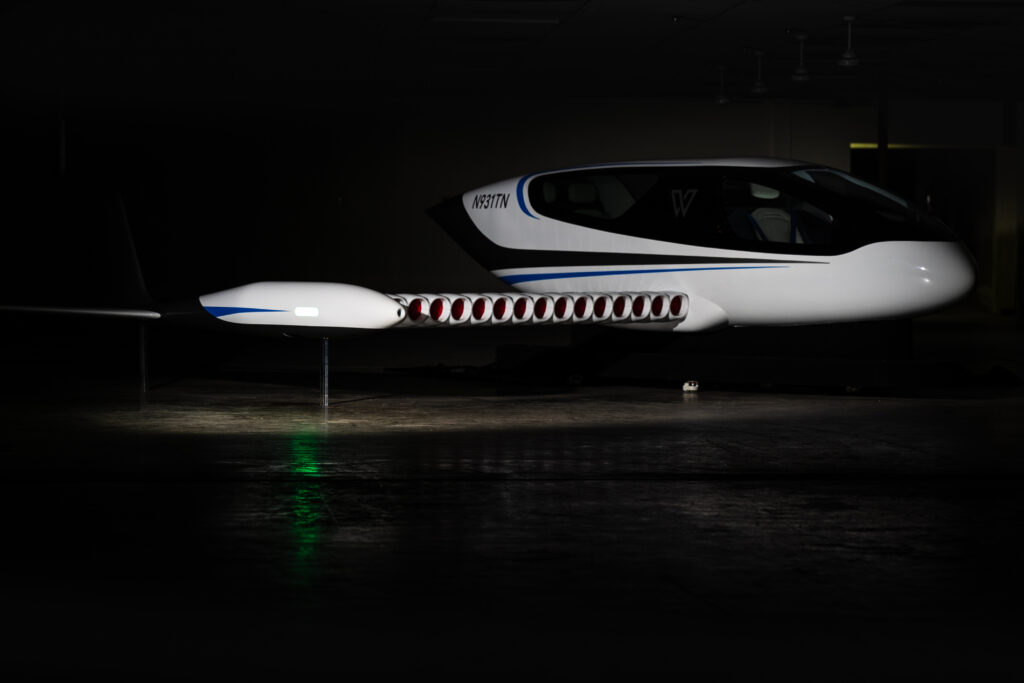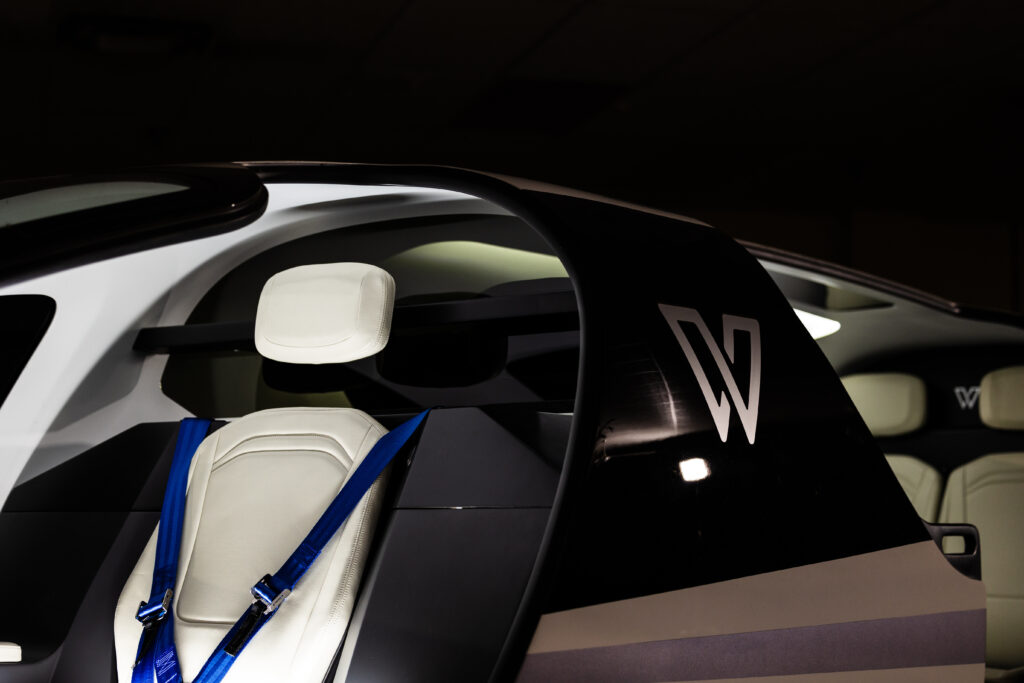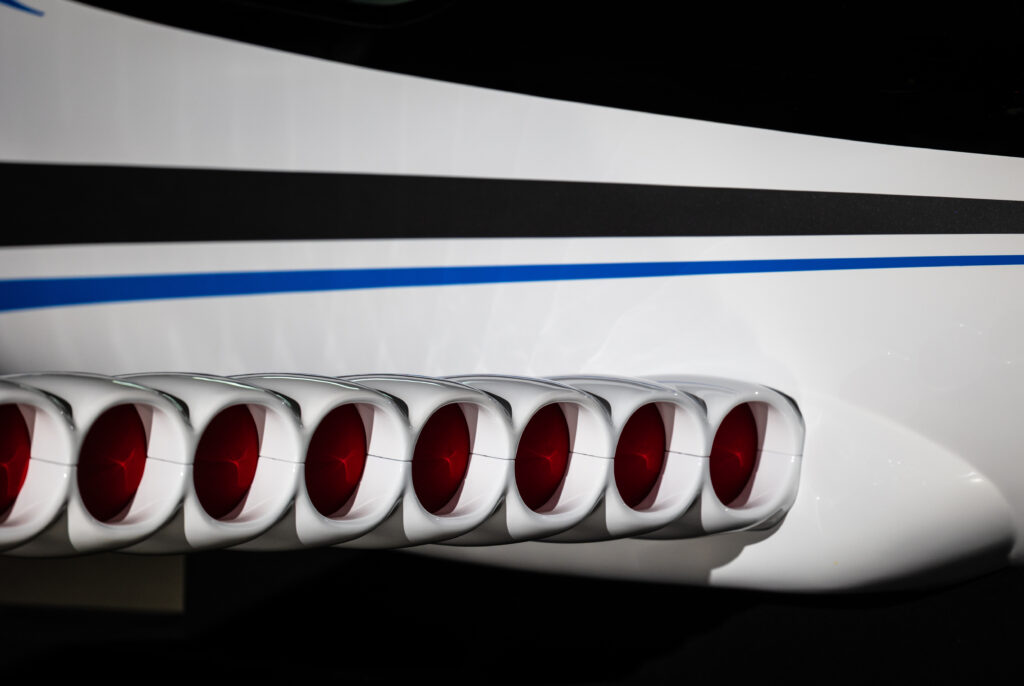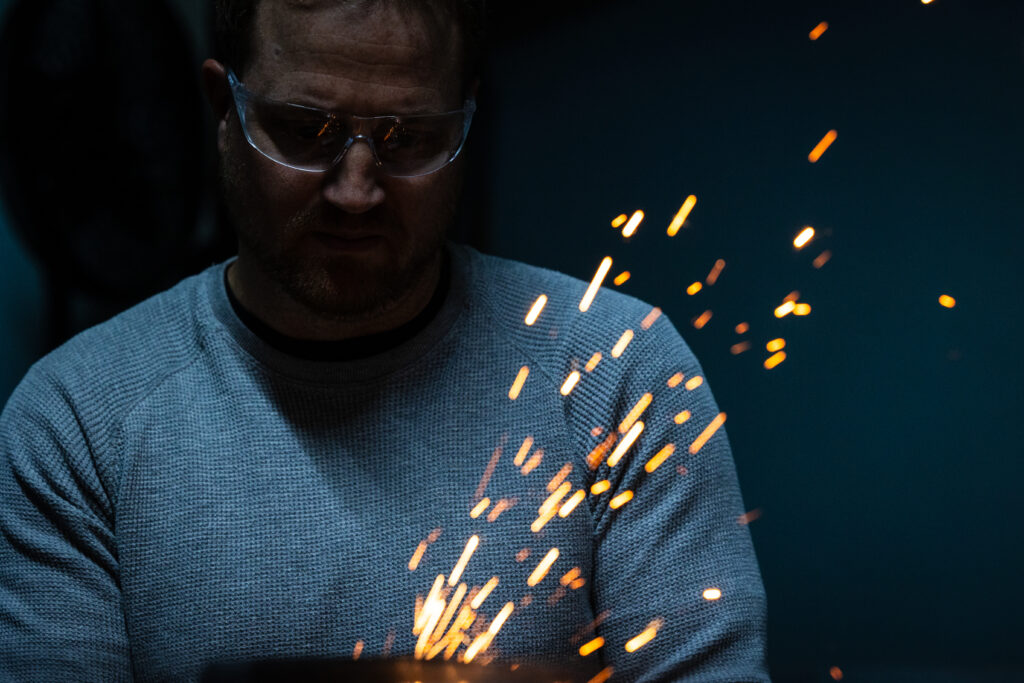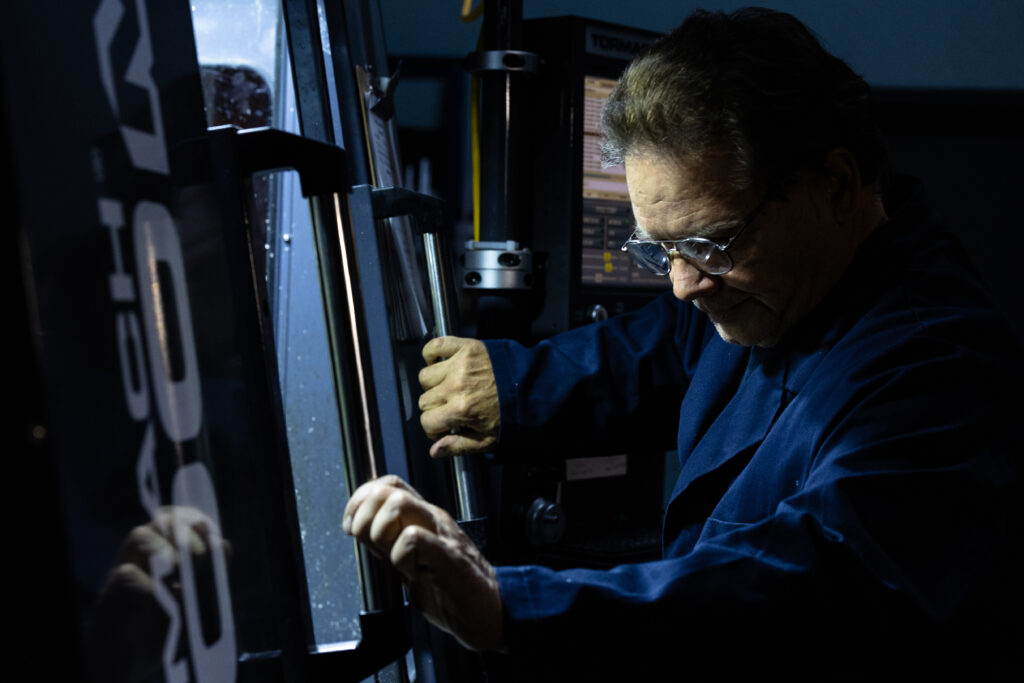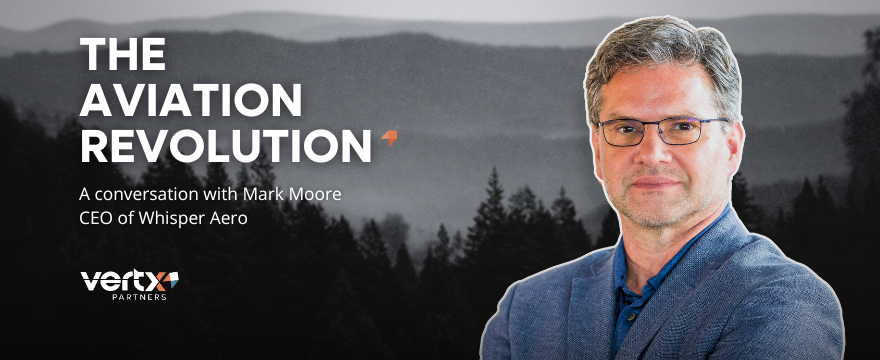
Listen in as Sean Frisbee, President of Vertx Partners, sits down with Whisper Aero Co-Founder and AAM expert Mark Moore to discuss Whisper’s technology, Advanced Air Mobility (AAM), and the industry’s future.
The following is a selected transcript from Sean Frisbee and Mark Moore’s conversation about Whisper Aero, quiet propulsion technology, and the future of Advanced Air Mobility. The full discussion can be viewed by watching the video above.
Retired Air Force Colonel Sean Frisbee founded Vertx Partners in 2021 to solve challenges for the U.S. Air Force while bettering the economy of West Virginia and Appalachia. A former President & CEO of the WVU Alumni Association and once the Systems Program Director for the Pentagon’s F-22 Raptor program, Sean’s expertise and leadership experience make him an industry authority.
Mark Moore is the Co-Founder & CEO of Whisper Aero, a Tennessee-based start-up developing the next generation of quiet electric propulsion. Before this role, Moore co-founded Uber Elevate and served as its Engineering Director. With over 30 years of experience at NASA, Moore led the development of Distributed Electric Propulsion (DEP) technology, overseeing the design, construction, and flight testing of various electric flight demonstrators.
Sean: Could you tell me a little bit about your background leading up to your founding of Whisper Aero?
Mark: Yeah, I was at NASA for 32 years. The entire time, I was focused on aircraft. People think, “NASA – space,” but no – even when I was 12 years old, I was fascinated with aircraft. My journey was all about new technologies that could fundamentally make aircraft better. In 32 years at NASA, I did a lot of research across different aircraft types, all the way from big commercial transports to very small UAVs. My specialty is on powered lift, which is vertical takeoff and landing aircraft and extremely short takeoff and landing aircraft: how you combine aerodynamics, propulsion, control, and acoustics in very complex ways to achieve amazing new capabilities. The last 16 years of my career were focused on this emerging new technology of electric aviation. Tesla had just introduced the Roadster and I was just getting my PhD, and was fascinated with the idea of how you could put together these new lightweight motors, digital controllers, and lithium batteries.
S: Right, and bring new capabilities such as these low-level acoustics, which have always been a challenge on the DoD side. You talk to the special operatives and they’ll tell you the sound of the Predator is giving us away. Reducing the acoustic signature is not an easy thing to do.
M: It’s pretty much the most complex challenge, but early on that was my focus because electric propulsion is very enabling in terms of the acoustic signature you can achieve. The first foray I had into utilizing distributive electric propulsion to achieve a low acoustic signature is NASA Puffin. That was a one-person eVTOL, the first eVTOL aircraft, and the idea was that it could autonomously deploy to rescue a downed pilot or deliver cargo. The really unique thing about it was how low of an acoustic signature you could achieve with that 600-lb aircraft.
S: So, as we think of this Urban or Advanced Air Mobility, the language keeps shifting, and there’s a lot of talk about the ‘Urban’ part of it. One of the things Vertx Partners is interested in is the utilization of these vehicles in a rural environment. Most of America is rural.
M: That’s what I’m most excited by. Uber focuses on the urban side because that’s their market and their mission. So, UAM really helped fill a gap for them. Where UberX is really good with short distances, hopping from San Francisco to San Jose, for example – a 40-mile trip – that’s a two-hour ride that costs $120. So, Uber Elevate was about finding a faster alternate route.
But I agree about the rural side of things. What I personally really care about is Regional Air Mobility (RAM). In 2011, when AAM was gaining momentum, I pushed both urban and rural. One of the reasons we situated Whisper Aero in Tennessee was because of these fundamentally underserved areas. We want to live in the future we’re trying to create. Frankly, RAM is a much more pragmatic, near-term opportunity that would have a greater impact on American productivity and transitioning the economy into the “Electric Age.”
S: You’re situated in a rural environment. When you think of Appalachia, you think of Tennessee, Kentucky, and West Virginia. The people who can really benefit are the ones out there in those rural communities. I was going to visit a friend not long ago, and I Googled a trip from Charleston to Oceana, West Virginia. It’s about 40 miles, and it was an hour and 40-minute drive. If you think about the transport of pharmaceuticals or urgent care, this industry could have a huge impact in rural areas.
M: Absolutely. It’s about access. We live in an age where, for instance, broadband brings the ability to transmit data across regions effectively. It enables education and connectivity. But that’s just tiny packets of data; we don’t want to leave people behind. That’s the amazing opportunity with RAM. You can turn these longer trips into opportunities to connect with cities, with jobs, to universities, and medical care. Suddenly, it’s a 15-minute trip. And especially with these new electric aircraft, it’s affordable – that’s the key difference. The operating costs are two or three times lower than using turbine-powered or other traditional aircraft.
S: When we start talking about public acceptance, which is vital for this industry to move forward, Whisper technology is going to play a critical role in that acceptance. No one wants to sit on their back deck and have a drone buzz over them. Has Whisper been out there in the community raising acceptance of this technology?
M: Yes, we’ve been very engaged with that across different communities. Even at Uber Elevate, we’d meet with city councils to hear their concerns. One of the key factors is conforming land use zoning, which has noise limitations. You can have a few eVTOL or drone delivery operations and not annoy the community. But if these are really becoming an economic service at scale, it’s operating all the time. At scale is when those services make a difference, but they cannot be nuisances. Whisper is all about enabling communities to evolve into a more considerate future as well as a more compelling future. Whisper values noise reduction and efficiency, and we’re looking to make a positive impact on the entire electric economy that’s coming in the next 20 years.
S: There are a lot of steps to get this technology to scale. How do you see that playing out, especially in the implementation of rural assets?
M: We’ve had about 16 years of fundamental research, and now we’re just a few years from the first electric aircraft being FAA-certified. Commercial use won’t be an instantaneous jump; there’s always a transition phase that lasts about 10 years as we saw with LED TVs and cell phones. I see 2025 as the starting point of the first services, but it gets really exciting from 2030 to 2035 when many entrants are in the pool. You’re not just using first-wave technology at that point, that’s when you have many different synergistic technologies adding up to provide a compelling product at scale. By 2030, I think we’ll see 10 to 20 manufacturers making a few hundred electric aircraft a year. By 2035, thousands of aircraft will be made a year. By 2040, the technology that has incubated in smaller aircraft will make the leap to large commercial aircraft.
And it’s not just about the civil side of things, there’s also the defense market. Whisper has manufactured a drone that’s the same size and weight as the Boeing Insitu ScanEagle, but where the latter drone has to fly 5,000 feet away to avoid being heard, our drone can fly as close as 250 feet. Think about what that does for picture resolution. When you can have step changes orders of magnitude better, that’s really exciting because the end-users really need that kind of capability.
S: I want to return to the scaling discussion real quick. Perhaps the General Aviation (GA) airports that are scattered all over the country and have relatively low usage may become more important as we scale up the use of eVTOLs. What are your thoughts on that?
M: They absolutely will become important. Highways are bogged down. These major productivity arteries, both in and around cities, are not keeping up. We need alternatives.
In Tennessee, we have 71 airports that already exist – the investment has already been made. They average 10 to 20 flights daily when they’re capable of hundreds. This is an easy opportunity to turn these GA airports into mobility portals. With aircraft that are safe, quiet, and affordable, we can leverage them.
S: Vertx Partners is really focused on trying to introduce our young boys and girls to aerospace and STEM. In the Air Force, I saw great leaders, researchers, scientists, and great minds come from every corner of America. So, how can we get these students to imagine being part of the space movement and AAM? What are your thoughts about getting this word out?
M: It only takes one little spark with kids. When I was 12 years old, it was jumping off sand dunes in a raincoat, pretending I was flying. From then on, that’s what I wanted to do. Whisper gives talks at schools to try to create that spark. At a recent air show, we subsidized rides on Cessnas for kids to have that first moment of flight. There are so many ways to do it, but the point is it actually doesn’t take much – it takes one spark at the right moment to ignite a fire.
You know, I love living in small towns. But what I really don’t like is seeing these communities left behind in terms of having the same opportunities as cities. I’m committed to the idea that it doesn’t need to be that way. It’s all about creating the space so that anyone can make a contribution to making the world a better place.
To view our Vertx Film on Whisper Aero, check out the video above. Interested in becoming part of the Vertx network? Contact us today.
